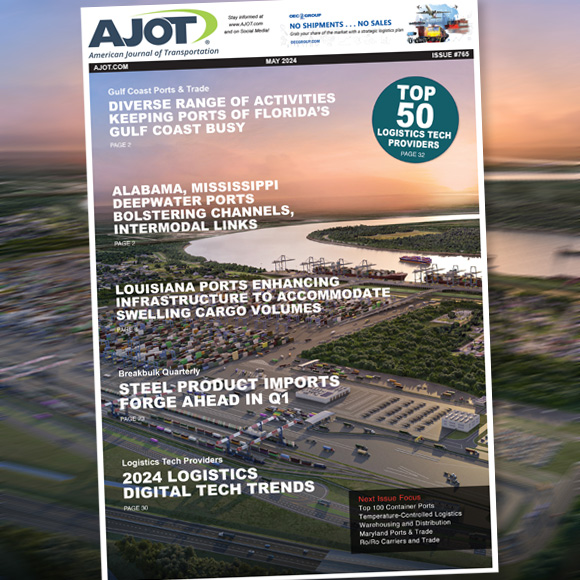Global merchandise trade will slump well below historical growth trends this year, held down by geopolitical tensions and economic pressures including inflation, Russia’s war, monetary policy tightening and financial market uncertainty, the World Trade Organization said.
The Geneva-based institution said it expects goods trade in 2023 to increase 1.7% from last year, compared with its October forecast for a 1% gain, according to a report released Wednesday. Last year the figure came in at 2.7% — in line with the 12-year historical average of 2.6% trade growth.
Looking further ahead, the WTO expects a more subdued rebound next year than it previously expected. Goods trade growth for 2024 is now pegged at 3.2%, compared with its previous projection of 3.5%. The WTO cautioned that this projection remains highly dependent on the course of the war in Ukraine.
“The outlook for trade is quite negative, even though it’s not as bad as we actually feared a year ago,” WTO Chief Economist Ralph Ossa said in an interview.
The WTO said North America will be a driver of trade in 2023, with an expected rise in merchandise export growth of 3.3%.
Globally, economic output is expected to expand by 2.4% this year, down slightly from the WTO’s previous projection of 2.7%, the report said.
The most serious threat to the outlook would be a food crisis that triggers widespread hunger and starvation in low-income countries, according to the report. “Wealthy countries need to be on the lookout for signs of such a crisis and take steps in advance to prepare for it,” the report stated.
Other major risks include resurgent inflation, a sharper-than-expected slowdown in major economies, and intensified geopolitical turmoil.
This year’s slowdown comes on the back of a solid 2022, when the value of world merchandise trade rose 12% to $25.3 trillion, buoyed partly by high global commodity prices, according to the report. That was almost a third higher than its pre-pandemic level in 2019.

Digital Boom
The value of cross-border commercial services jumped 15% last year to $6.8 trillion, according to the report, which highlighted digitally delivered services that have surged almost fourfold since 2005. The value of digital service transactions — like those made through Zoom calls, apps and emails — reached $3.82 trillion last year, with Europe accounting for more than half of the total.
The WTO said the first three quarters of 2022 were marked by a strong 4.3% rise in global trade flows followed by a sharp slump in the final quarter.
“During the first three quarters of 2022, trade flows were remarkably resilient, given the shocks that the global economy was exposed to,” Ossa said. “But then the fourth quarter really, really took a hit.”
Trade growth decelerated near year-end as central banks tightened lending conditions as part of their effort to tamp down rising consumer prices. The effects of central banks’ monetary tightening was “basically pulling down economies around the world,” Ossa said.
While interest-rate hikes in advanced economies like the US and euro area may have succeeded in cooling demand, “they have also revealed weaknesses in banking systems that could lead to wider financial instability if left unchecked,” according to the report.
“Miscalculation could have negative consequences for the global economy and trade,” it said.
The last quarter of 2022 was also marked by further disruption to global supply chains due to a rise in Chinese Covid infections after health restrictions were abruptly lifted.
The WTO said it expects China’s reopening will ultimately boost global trade flows by unleashing China’s pent-up consumer demand, particularly for travel-related services.





